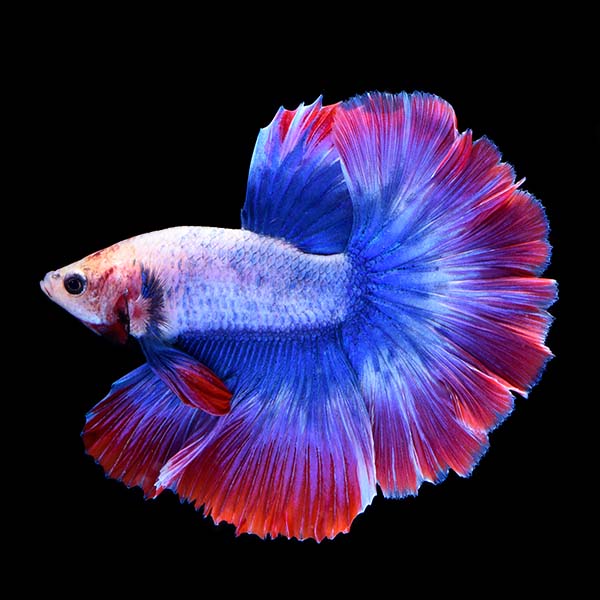Just How to Present Betta Fish to an Area Storage Tank Safely
Just How to Present Betta Fish to an Area Storage Tank Safely
Blog Article
How to Reproduce Betta Fish Effectively: Expert Strategies and Insights for Hobbyists Looking to Expand Their Betta Collection
Breeding Betta fish needs a nuanced understanding of genes and ecological conditions, making it vital for enthusiasts to come close to the procedure with both persistance and treatment. Producing an ideal breeding atmosphere, choosing the appropriate sets, and observing the intricacies of their courtship behaviors are foundational steps that can substantially affect the end result.
Recognizing Betta Fish Genetics
Understanding the genes of Betta fish is critical for effective breeding, as it influences characteristics such as color, fin form, and habits. Betta fish display a diverse array of shades and patterns, mainly identified by their genetic make-up.
Along with coloration, fin morphology is another significant aspect of Betta genes (betta fish). The sizes and shape of fins are affected by different genes, consisting of those that identify whether the fins are short, long, or veil-shaped. Recognizing these genetic variants assists breeders predict the phenotypic results of their offspring
In addition, behavior attributes such as aggressiveness and territoriality can additionally be affected by genes. These behaviors play an important duty in the breeding procedure, as they can impact generating success and the general temperament of the resulting fry. By thoroughly understanding these hereditary principles, dog breeders can make informed choices, eventually boosting their breeding programs and attaining desirable outcomes.
Preparing the Breeding Atmosphere
Creating an ideal reproduction environment is crucial for the successful recreation of Betta fish. The first step in preparing this atmosphere is to select a proper breeding storage tank, preferably ranging from 5 to 10 gallons. This size permits sufficient swimming area and the establishment of areas. The container ought to be furnished with a heater to preserve a steady temperature level between 78 ° F and 80 ° F, which is important for urging spawning habits.
Next, think about using a sponge filter or an air rock to provide gentle water flow without producing solid currents that can emphasize the fish. It is crucial to install plants or breeding cones to offer hiding spots and advertise comfort for the female during the spawning process. Floating plants, such as Java moss or water sprite, can also create an extra native environment while assisting in bubble nest structure by the male.
Before introducing the breeding pairs, ensure the water is conditioned and devoid of damaging chemicals, such as chlorine or heavy metals. betta fish. Regular water changes should be performed to keep ideal water top quality, boosting the opportunities of effective breeding. With these preparations in place, the reproducing setting will certainly support the health and well-being of both Betta fish
Picking Reproduction Pairs
Choosing the right reproduction pairs is critical for accomplishing successful Betta fish recreation. Healthy Betta fish display vibrant shades, clear eyes, and active habits.
Temperament is one more essential factor to consider, as Betta fish are known for their hostile nature. It is recommended to pick a male and lady that exhibit suitable temperaments to lessen stress during the reproducing procedure. A calm man can motivate a smoother courtship, while a female that is as well hostile may interrupt the procedure.
Genetic background additionally plays a significant duty in the top quality of the offspring. Reproducing i thought about this fish that are genetically varied can reduce the danger of genetic wellness issues and improve the total vitality of the fry. It is helpful to look into the lineage of both the male and lady, focusing on desirable qualities such as fin kind, color scheme, and size.
The Breeding Process
The reproduction procedure of Betta fish calls for careful planning and interest to information to guarantee an effective end result. It is important to prepare an appropriate reproduction container, ideally a 5-10 gallon fish tank with a temperature level kept at 78-80 ° F. The container should be equipped with a heater, filter (preferably sponge type to avoid strong currents), and a lot of aquatic plants for the female to hide.
Once the atmosphere is established, introduce the picked breeding pair to the tank, allowing them to acclimate. Observe their behavior; the male will certainly display elaborate courtship rituals, consisting of flaring his fins and developing a bubble nest. If the lady shows rate of interest, she will present upright red stripes showing preparedness for spawning.
When the woman is responsive, the pair will certainly engage in a mating accept, during which the male feeds the eggs. Preserving optimum water problems during this period is crucial for the growth of healthy Betta fry.
Taking Care Of Betta Fry

Feeding Betta fry is essential, visit here as they call for a diet plan high in protein. Initially, they can be fed infusoria or liquid fry food, transitioning to carefully crushed top notch pellets as they expand. Feed tiny portions multiple times a day to motivate Homepage healthy and balanced growth without straining the tank with uneaten food.

As they develop, monitor their growth very closely and separate any kind of aggressive people to avoid injury. By offering a supporting environment and appropriate nourishment, hobbyists can effectively raise Betta fry into vivid, healthy fish, inevitably enhancing their breeding undertakings.
Conclusion
Successful Betta fish reproduction requires precise focus to genetic selection, ecological problems, and look after the fry. By comprehending the genetics of Betta fish and preparing an ideal breeding atmosphere, enthusiasts can boost the chances of creating lively, healthy and balanced offspring. Selecting compatible reproduction sets and very closely keeping track of the courtship and generating procedures are crucial. Giving ideal care for the fry guarantees their healthy advancement, adding to a flourishing Betta collection.
Report this page